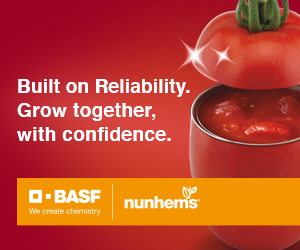The African market for tomato pastes is broadly divided into four regions of very unequal importance. West Africa is by far the most active consumer region (see additional information at the end of this article), with imports accounting for an average of more than 61% of the continent's total supplies over the last eleven years.
Over the same period, Mediterranean Africa accounted for almost 21% of imports. Southern Africa accounted for just under 13% of African paste imports, and East Africa for less than 5% of the total.
The latest observations partly confirm our previous comments (see related articles below), notably concerning the gradual slowdown in foreign purchases, whose volumes fell by 30% between 2016 (650,000 t) and 2022 (455,000 t). Results for 2023 contradict this decline, with a surge in imports to around 505,000 t. It remains to be seen whether this is a temporary episode or the start of a lasting trend reversal.

Two major players in the global processed tomato industry, China and Italy, share most of the African market. Over the last eleven years, these two industries have exported a total volume of between 400,000 and 575,000 t of tomato pastes to African countries. It is important to note, however, that Chinese products leave only a relatively small market share to competing products, since China's share of the African market has fluctuated between two-thirds and three-quarters of total African purchasing volumes in recent years.
Given shifting price patterns for tomato pastes in recent years, the value of African imports in this sector has not evolved linearly in relation to quantities. The decrease in quantities imported was accompanied by a fall in expenditure only until around 2018, after which African spending on paste imports, finally impacted by the rise in world prices, began to rise again, reaching levels similar to those of 2016 by 2023. All in all, although 11% lower than the average of the pre-Covid period (566,000 t), tomato paste imports in 2023 (506,000 t) cost African consumers 23% more, i.e. a total of over USD 589 million.

While the relative importance of West African markets has declined somewhat over the past ten years, the region clearly remains a strategic trading destination for paste-exporting processing countries such as China and Italy, as well as other newcomers to regional and global competition, such as Egypt.
Based on the performance of the twelve main countries exporting pastes, spending by West African countries can be estimated at around USD 351 million, far ahead of that of the Mediterranean African region, estimated at around USD 129 million. Spending in Southern Africa was close to USD 89 million, while spending in East Africa remained close to historically low levels, at around USD 19 million.

Some complementary data
List of countries:
East Africa: Djibouti, Eritrea, Ethiopia, Kenya, Somalia, Sudan, South Sudan;
Mediterranean Africa: Algeria, Egypt, Libya, Morocco, Tunisia;
Southern Africa: Angola, Botswana, Burundi, Comoros, Lesotho, Madagascar, Malawi, Mauritius, Mozambique, Namibia, Rwanda, Seychelles, South Africa, Swaziland, Eswatini, Tanzania, Uganda, Zambia, Zaire, Zimbabwe;
West Africa: Benin, Burkina Faso, Cameroon, Cabo Verde, Central African Republic, Congo (DROC), Congo (ROC), Equatorial Guinea, Gabon, Gambia, Ghana, Guinea, Guinea-Bissau, Cote d'Ivoire, Liberia, Mali, Mauritania, Niger, Nigeria, Sao Tome and Principe, Senegal, Sierra Leone, Chad, Togo.
Evolution of regional components of African spending on tomato paste imports.
Distribution of African tomato paste imports by supplier country. From 2013 to 2023, China accounted for an average 70% of Africa's foreign purchases of tomato pastes.
Distribution of African spending on tomato paste imports by supplier country. From 2013 to 2023, China and Italy accounted for an average 88% of African spending on tomato pastes, i.e. between USD 395 and 665 million per year.
Source: Trade Data Monitor




































